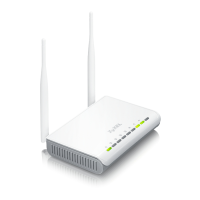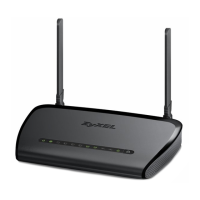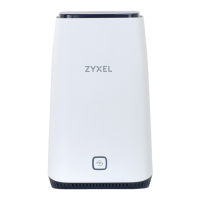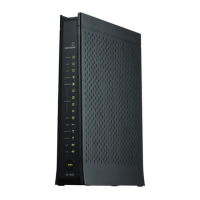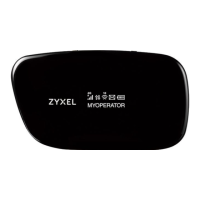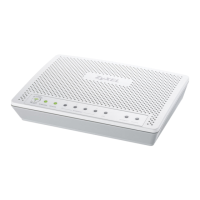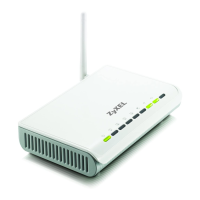
Do you have a question about the ZyXEL Communications NBG-416N and is the answer not in the manual?
| VPN support | IPSec, PPTP, L2TP |
|---|---|
| Ethernet LAN | Yes |
| Cabling technology | 10/100Base-T(X) |
| Networking standards | IEEE 802.11b, IEEE 802.11g, IEEE 802.11n, IEEE 802.3, IEEE 802.3u |
| Ethernet LAN data rates | 10, 100 Mbit/s |
| Ethernet LAN interface type | Fast Ethernet |
| Wi-Fi standards | 802.11b, 802.11g, Wi-Fi 4 (802.11n) |
| Top Wi-Fi standard | Wi-Fi 4 (802.11n) |
| WLAN data transfer rate (max) | 150 Mbit/s |
| Input current | 1 A |
| Input voltage | 5 V |
| xDSL connection | No |
| Dimensions (WxDxH) | 162 x 115 x 33 mm |
| Operating temperature (T-T) | 32 - 104 °F |
| WLAN data transfer rates supported | 11, 54, 150 Mbit/s |
| Supported network protocols | PPPoE, Stat IP, Dyn IP, PPTP, DDNS |
| Antennas quantity | 1 |
| Antenna gain level (max) | 2 dBi |
| Web-based management | - |
| Ethernet LAN (RJ-45) ports | 4 |
| Security algorithms | 128-bit WEP, 64-bit WEP, WPA, WPA2, WPS |
| Safety | CE LVD |
| Certification | CE, FCC, NCC |
| Storage temperature (T-T) | -30 - 70 °C |
| Storage relative humidity (H-H) | 20 - 95 % |
| Operating relative humidity (H-H) | 20 - 90 % |
| Package depth | 155 mm |
| Package width | 247 mm |
| Package height | 61 mm |
| Package weight | 560 g |
| Cables included | LAN (RJ-45) |
| Product color | White |
| LED indicators | LAN, Power, WAN, WLAN, Y |
| Weight | 216 g |
|---|
Details on how to contact ZyXEL support for unresolved issues.
Outlines essential safety instructions and warnings for using the NBG-416N.
Introduces Wi-Fi Protected Setup (WPS) for easy wireless network setup.
Describes how to access and navigate the NBG-416N's web-based management interface.
Provides step-by-step instructions on how to launch the web configurator.
Explains how to restore the device to its factory default configuration.
Describes the status screen when the device operates in Router Mode.
Guides through the wizard setup for configuring Internet access.
Covers administrative and system-related information in the wizard.
Guides through setting up the wireless LAN connection.
Guides through configuring the Internet connection type.
Describes configuring the connection using Ethernet encapsulation.
Explains PPPoE encapsulation for dial-up Internet connections.
Details PPTP encapsulation for VPN and secure transfers.
Covers assigning a fixed or automatically assigned IP address.
Discusses configuring settings when the NBG-416N is in Access Point Mode.
Provides steps to configure the device to operate as an Access Point.
Guides on setting up wireless security using WPS on both devices.
Details the Push Button Configuration method for WPS setup.
Explains the PIN Configuration method for WPS setup.
Shows how to configure wireless security without using WPS.
Discusses how to configure wireless network settings on the NBG-416N.
Lists the various wireless LAN configuration options available.
Introduces different types of wireless security configurations.
Details how to use MAC address filtering for wireless network access control.
Discusses wireless network encryption types and their security levels.
Describes the screen for enabling Wireless LAN and setting parameters.
Explains WPA-PSK and WPA2-PSK security settings for wireless networks.
Covers configuring MAC address filtering rules for wireless access.
Covers enabling WPS, generating PINs, and checking WPS status.
Discusses configuring WAN screens for Internet access.
Provides information for configuring WAN connection and advanced features.
Covers encapsulation methods, WAN IP, and DNS server assignment.
Details configuration for Ethernet encapsulation.
Explains PPPoE encapsulation for dial-up connections.
Details PPTP encapsulation for VPN and secure transfers.
Discusses configuring LAN settings for network connectivity.
Explains LAN parameters and physical connections.
Allows changing basic LAN settings like IP address and subnet mask.
Explains the DHCP server functionality for IP configuration.
Lists actions that can be performed with the DHCP server.
Covers enabling the DHCP server and setting the IP pool.
Allows assigning IP addresses based on MAC addresses and configuring DNS.
Discusses NAT for translating IP addresses for network communication.
Lists NAT configuration options including enabling NAT and port forwarding.
Covers enabling NAT and setting a default server.
Explains how to configure port forwarding for incoming service requests.
Details port forwarding rules and commonly used port numbers.
Provides an example of setting up multiple servers behind NAT.
Discusses configuring the firewall to protect the network from unwanted traffic.
Lists firewall configuration options like enabling/disabling and setting logs.
Describes the stateful inspection firewall and its purpose.
Guides on how to upload new firmware to the NBG-416N.
Provides solutions for problems accessing or logging into the device.
Offers steps to find the device's IP address if forgotten.
Reminds users of default credentials and reset options.
Troubleshoots issues preventing access to the login screen.
Solves login problems after the screen appears.
Addresses issues related to accessing the Internet.
Provides steps to resolve Internet access problems.
Explains how to reset the device to factory default settings.
Discusses Wi-Fi Protected Access (WPA) and WPA2 standards for wireless security.
Details WPA/WPA2 encryption methods like TKIP and AES.
